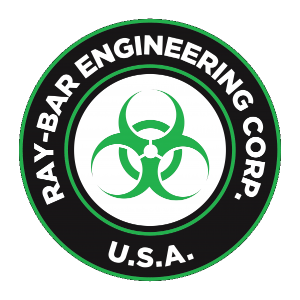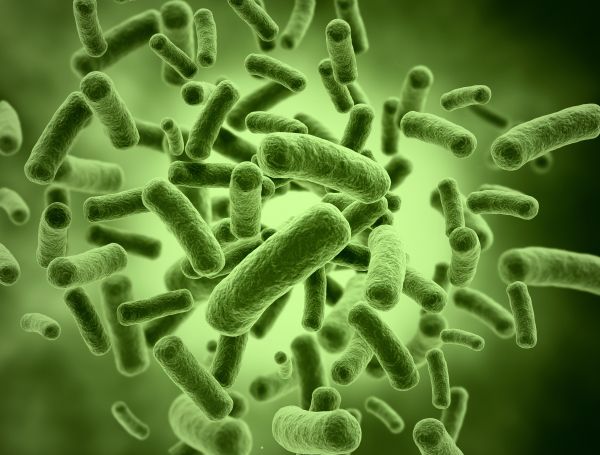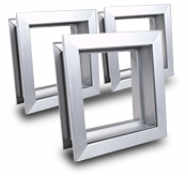

Pre-Finished Modular Retrofit Shielding Panels
Ray-Bar's Microbial Resistant Pre-Finished Modular Retrofit Shielding Panels are internally shielded to properly provide x-ray protection from Alpha, Beta and Gamma Ionizing radiation for proper shielding of medical diagnostic x-ray imaging procedures.
Available in 12 protective Pb equivalency radiation shielding levels.
These radiation shielding panels are ready to install easily and quickly over existing walls and partitions without requiring the disruption or costs of any reframing or other construction or demolition activities. The end-user can literally retrofit an existing exam room and have a functionally shielded x-ray room ready to begin imaging procedures in 1 day.
An excellent choice for rapid deployment response and assembly of emergency or disaster medical imaging facilities.
Our Pre-Finished Modular Retrofit Shielding Panels have Ray-Bar factory-applied, easy to clean, non-toxic, and hygienic ionic silver biocide containing antimicrobial durable surfaces resisting the growth of bacteria, molds, and fungus.
Qualified Independent Microbiology Laboratory Tested for antimicrobial performance.
Our surface coating was tested with the following Micro-organisms and % reduction results to these standards:
Testing Results
ASTM 2180 (Standard test Method for Determining the Activity of Incorporated Antimicrobial Agents in Polymeric or Hydrophobic Materials)
- Staphylococcus aureus: Result: 99.999% (Staph)
JIS Z 2801 (Test for Antimicrobial Activity and Efficacy)
- Escherichia coli: Result: 99.9998% (E-coli)
- Methicillin-Resistant Staphylococcus Aureus: Result: 99.987% (MRSA)
- Klebsiella pneumoniae: Result: 99.998% (Pneumonia)
- Acinetobacter baumannii: Result: 99.9978%
- Bacillus cereus:Result: 99.9955%
- Candida albicans: Result: 99.981% (Candida)
- Strepococcus pneumonia: Result: 99.99% (Strep)
- Aspergillus Niger: Result: 99.91%
JIS Z 2801 TEST METHODS AND ASSESSMENT OF ANTIMICROBIAL ACTIVITY OF HARD NON-POROUS SURFACES
The JIS Z 2801 method tests the ability of plastics, metals, ceramics and other antimicrobial surfaces to inhibit the growth of microorganisms or kill them. The procedure is very sensitive to antimicrobial activity and has a number of real-world applications anywhere from the hospital/clinical environment to a household consumer company concerned with the ability of a material they have to allow bacterial growth.
The JIS Z 2801 method is the most commonly chosen test and has become the industry standard for antimicrobial hard surface performance in the United States. Below, you will find a summary of the JIS Z 2801 test method, along with some of its strengths and weaknesses. The JIS Z 2801 test method is designed to quantitatively test the ability of hard surfaces to inhibit the growth of microorganisms or kill them, over a 24 hour period of contact.
The JIS Z 2801 procedure has been adopted as an International Organization for Standardization (ISO) procedure, ISO 22196.
SUMMARY OF THE JIS Z 2801 TEST
- The test microorganism is prepared, usually by growth in a liquid culture medium.
- The suspension of test microorganism is standardized by dilution in a nutritive broth (this affords microorganisms the potential to grow during the test).
- Control and test surfaces are inoculated with microorganisms, in triplicate, and then the microbial inoculum is covered with a thin, sterile film. Covering the inoculum spreads it, prevents it from evaporating, and ensures close contact with the antimicrobial surface.
- Microbial concentrations are determined at "time zero" by elution followed by dilution and plating.
- A control is run to verify that the neutralization/elution method effectively neutralizes the antimicrobial agent in the antimicrobial surface being tested.
- Inoculated, covered control and antimicrobial test surfaces are allowed to incubate undisturbed in a humid environment for 24 hours.
- After incubation, microbial concentrations are determined. The reduction of microorganisms relative to initial concentrations and the control surface is calculated.
STRENGTHS OF THE JIS Z 2801 TEST
- The method is quantitative and results tend to be reproducible, provided the inoculum does not spill off of the target area after being covered with the thin film.
- The method tests for both bacteriostatic (growth-inhibiting) and bactericidal (bacteria-killing) properties.
- Microbial concentrations are standardized, and bacteria are provided with nutrients during the incubation period, which provides them with ample opportunity to grow if surfaces aren't sufficiently antimicrobial. This is in contrast to certain other antimicrobial tests, where microbes are "incubated" in non-nutritive suspensions, which itself may be stressful over long periods.
- The method stipulates triplicate experimentation, which helps researchers estimate the precision of the individual tests and increases overall experimental accuracy.
- The method includes a "pass/fail" criterion for the calculated levels of antimicrobial activity observed in test samples, making determinations of antimicrobial activity less discretionary.
Contact Us to Learn How Ray-Bar Can Provide Microbial Resistant Modular Retrofit Shielding Panels for Your Application
For over 80 years, Ray-Bar Engineering has been a leading manufacturer of top-tier radiation shielding solutions for medical, hospital, and industrial NDT facilities worldwide. Our radiation protection shielding products are designed and manufactured with precision to meet the strictest U.S. and international radiation and building safety standards.
Contact us to learn how Ray-Bar's radiation shielding products can provide superior protection in your application. You can also request a quote online for pricing estimates on your project. For radiation shielding solutions that meet the highest industry standards, choose Ray-Bar Engineering.

